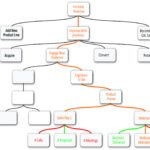Don’t fall into the trap of picking your KPIs because they are the ones used by others or on someone’s Top 10 KPI list. KPIs need to be consistent with your particular needs and always driven by your unique business goals. Claiming that the top 10 KPIs would be the same for everyone, is like saying “these are the top 10 winning lottery numbers”. They will always be different.
KPIs monitor specific activities
And let’s be clear. Things like increasing revenue or profit, or improving customer service are not performance indicators – they are not specific enough to tell you what to change if the numbers are not met. They are instead Results Indicators. They show how we are doing due to many activities. I contend that KPIs should monitor only very specific activities, so when the values change you know what to do about it.
Select KPIs based on your goals
There are potentially thousands of KPIs and various nuances of each leaving you with an unlimited number. KPIs that work for one organization may not work for yours. The factors impacting their performance may or may not apply in your situation.
KPIs measure activities and actions taken
Picking from a “list” assumes your activities are the same as another company’s for a given goal. For instance, your action to meet the goal of improving production quality may be to source better raw materials, whereas it may mean to hire better production workers or run shorter shifts for another firm. It all depends.
What activities are critical to meeting YOUR GOALS
Instead of picking from a generic list, figure out what activities are critical to meeting YOUR ORGANIZATION’S GOALS. Start with your goals and drill down from there. You may be doing that already, but perhaps not in a formal way. I am going to show you a logical way of building KPIs. Being consistent in your approach will create better buy-in for the numbers you come up with. That’s because you can show your work and how you came up with the numbers.
The logic of decision making
Take a look at the image below. It shows how beginning by stating your overall goal drives you to better identify KPIs that are actionable. Ultimately, there are many KPIs that should be tracked, since people within the whole organization have different functions. For this example we’ll follow the highlighted path through the various steps.

If our Goal is to increase Revenue; a critical (Critical Success Factor) item to accomplish might be to improve your overall presence in a certain market;
to do that, you need marketing activities to engage with a new audience who is unfamiliar to you;
the area of focus is decided to be engineers in North America;
for that you may decide it’s a good idea to show thought leadership;
one way to accomplish that may be to do regular Webinars;
you establish a KPI to monitor Percentage increases in Webinars; and
you set a target of 5 per month and a 20% increase in Webinar participation for each quarter.
As the example illustrates, there is a logical flow to decision making and in the evaluation of what is important to do. It shows an increasingly detailed dissection of the work or processes needed to accomplish the stated goal. What we have done is to make increasingly more refined decisions to arrive at effective KPIs and the targets we will assign to them.
Here are the building blocks we used
Goal |
Broad desired outcome. It states “what” we want to accomplish but not “how.” It states where you are going rather than how you will get there. |
Critical Success Factor |
Something that is vital to successfully achieve the Goal. |
Phase |
Stage or state we are addressing. For Marketing, it’s one of four phases: Engagement, Acquisition, Conversion or Retention. |
Segment |
Targeted audience or function being focused on. For marketing, it can be based on existing customers or new, age, gender, location, etc. |
Approach |
Short-term plan taken to achieve a critical success factor. It’s what you do, and for every critical success factor, there are a number of approaches. |
Action |
Precise activity or business process required to be performed to attain stated goal. |
KPI
|
Calculated value that is critical to the business and to attaining stated goal. Should be expressed as Ratio, Average, Percentage or Rate. |
Target |
Value assigned to Metric or KPI. |
To start, state your goal and then isolate the work you need to do to accomplish it by recording the phases as shown. You can use Word, Excel, Visio, or KPI Karta to do that and then track your actuals against set targets.
Conclusion
There’s no such thing as a top 10 list of KPI’s that can be universally applied. Don’t rely on what others use to measure their business activities. They are different from yours. Instead start by stating your goal and then identify what needs to be done at each level to come up with appropriate KPIs. By aligning your activities with your goals and by seeing the logical flow, everyone will buy into the numbers.






